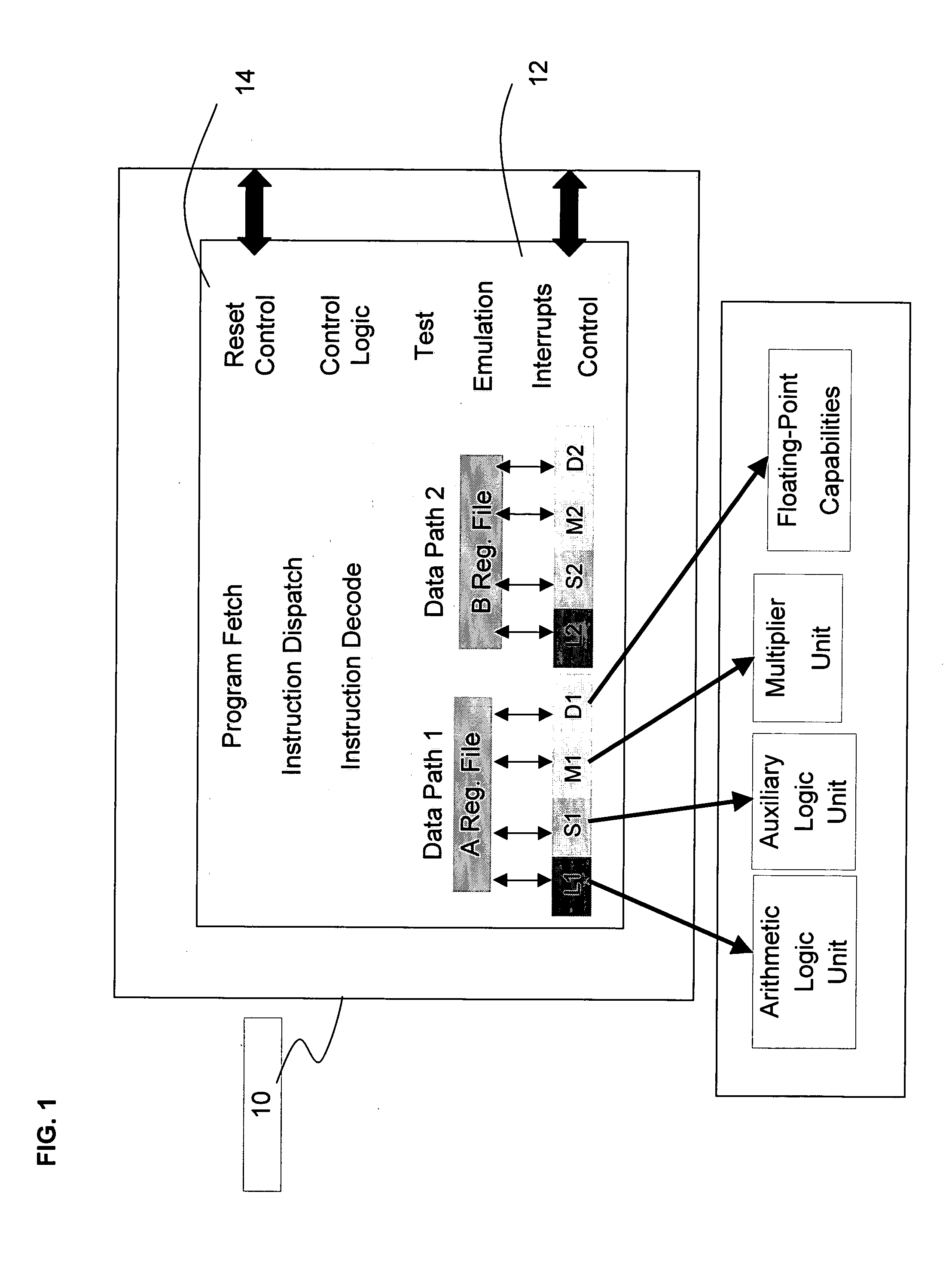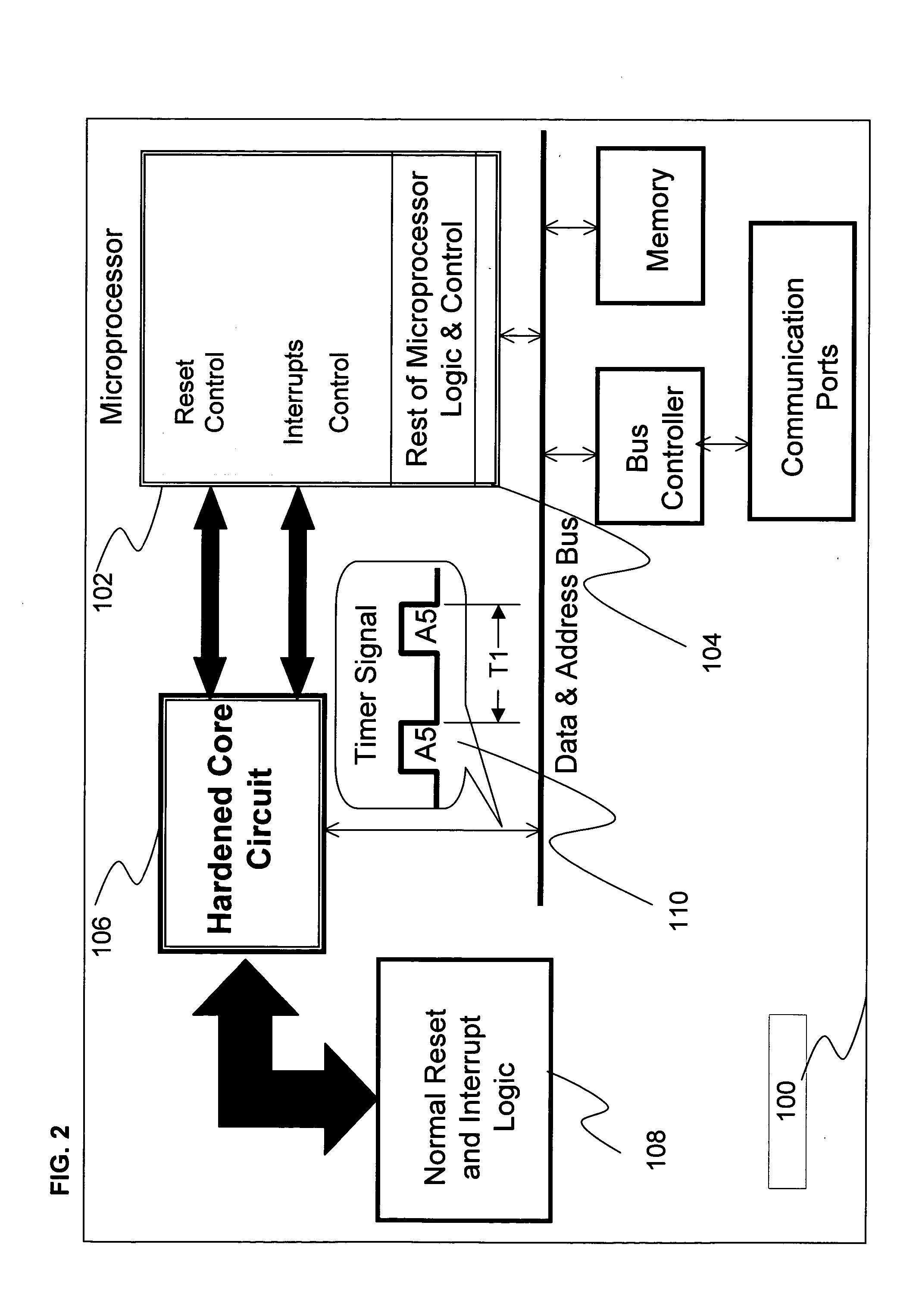Functional interrupt mitigation for fault tolerant computer
a technology of interrupt mitigation and fault tolerance, applied in the field of functional interrupt mitigation of fault tolerant computers, can solve the problems of additional power and synchronization problems, slow performance, and changes in internal data bits within or being processed by the microprocessor, so as to improve fault tolerance, improve fault tolerance, and improve fault toleran
- Summary
- Abstract
- Description
- Claims
- Application Information
AI Technical Summary
Problems solved by technology
Method used
Image
Examples
Embodiment Construction
[0017] The Hardened Core system disclosed herein is a fault detection and correction system capable of being implemented with any microprocessor. In one embodiment, the microprocessor control signals, typically reset(s) and interrupt(s), are electrically connected through the Hardened Core circuit, wherein the signals are activated when the Hardened Core circuit does not receive a periodic timer signal from the microprocessor, which is generated by software routine(s) in the microprocessor software.
[0018]FIG. 1 shows a typical microprocessor. As shown the microprocessor 10 typically includes a group of external input interrupt control signals 12 and reset control signals 14. When activated, the interrupt control signal(s) 12 typically cause the microprocessor to jump from its current software execution to predetermined software routine(s) stored at a specific location (vector address), where the priority and actions of the interrupt are based on the specific design of the individua...
PUM
 Login to View More
Login to View More Abstract
Description
Claims
Application Information
 Login to View More
Login to View More - R&D
- Intellectual Property
- Life Sciences
- Materials
- Tech Scout
- Unparalleled Data Quality
- Higher Quality Content
- 60% Fewer Hallucinations
Browse by: Latest US Patents, China's latest patents, Technical Efficacy Thesaurus, Application Domain, Technology Topic, Popular Technical Reports.
© 2025 PatSnap. All rights reserved.Legal|Privacy policy|Modern Slavery Act Transparency Statement|Sitemap|About US| Contact US: help@patsnap.com



